- Home
- Jonathan Maberry
Still of Night
Still of Night Read online
Copyright 2018 © Jonathan Maberry & Rachael Lavin
“Fat Girl with a Knife” © Jonathan Maberry Productions, LLC, was originally published in Slasher Girls and Monster Boys, edited by April Genevieve Tucholke; Dial Books, August 18, 2015.
All rights reserved. No part of this book may be used or reproduced by any means, graphic, electronic, or mechanical, including photocopying, recording, taping or by any information storage retrieval system without the written permission of the publisher except in the case of brief quotations embodied in critical articles and reviews.
This is a work of fiction. All of the characters, names, incidents, organizations, and dialogue in this novel are either the products of the author’s imagination or are used fictitiously.
JournalStone books may be ordered through booksellers or by contacting:
JournalStone
www.journalstone.com
The views expressed in this work are solely those of the authors and do not necessarily reflect the views of the publisher, and the publisher hereby disclaims any responsibility for them.
ISBN: 978-1-947654-34-1 (sc)
ISBN: 978-1-947654-35-8 (ebook)
JournalStone rev. date: November 9, 2018
Library of Congress Control Number: 2018952027
Printed in the United States of America
Cover Art & Design: Robert Grom
Back Cover Design: Jess Landry
Ebook layout: Lori Michelle
Edited by Vincenzo Bilof
Proofread by Sean Leonard
From Jonathan:
This is for Brian Keene—great writer, cultural influencer, world-class curmudgeon, good dad, true friend.
And, as always, for Sara Jo.
From Rachael:
For Matt, who inspires me to bring the worlds inside my head to life.
ACKNOWLEDGEMENTS
Special and heartfelt thanks to Dana Fredsti for editing and generally putting out all kinds of fires. (You rock in so many ways!) And thanks to David Fitzgerald for utility infield work. Nice!
AUTHOR’S FOREWORD
There are some things you need to know. The first of which is that I love my life-impaired fellow citizens. We have some history. A lot of history, actually.
My first exposure to “zombies,” as we’ve come to know them in the current pop culture world, goes back to October 1968, when I snuck into the movies to see the world premiere of Night of the Living Dead. A truly landmark horror film. Prior to that, zombies were a kind of somnambulistic slave in old black-and-white movies about Haiti. They didn’t eat human flesh and they weren’t really dead. Just dead-ish.
Then George A. Romero gave us that movie. And, before anyone throws down this book in semantic frustration, yes, I know that Romero did not make a zombie film. Yes, I know that the word “zombie” was inaccurately applied to one of his later films. Yes, I know that George fought tooth and nail to remove that word (and completely failed in that attempt). And, yes, I know his movie was about living dead ghouls. All of that is on the table.
But . . . these monsters are what we now call zombies. Everyone calls them that. Even George gave up and began calling them that in his later years. So, yes, this is a zombie book. There are zombies in it. None of those zombies are from Haiti. Just so we know where we stand.
Now, here’s the nicely complicated part of this.
In 2011, St. Martin’s Griffin published my novel, Dead of Night, which was my attempt to tell the story of the rise of the living dead with as much plausible science as possible. I wrote it for a couple of reasons. First, because I was always a little frustrated that zombie stories seemed to start with things in motion. Even Night of the Living Dead starts hours after the outbreak. These stories skip over the cause, or gloss over it. Romero certainly did. His movie had characters alluding to the possibility that it was radiation from a returning space probe as the root of the plague. This bothered me, even as a kid, because there wasn’t enough science behind it. I was a science nerd and that explanation made no sense. So, I wanted to tell a story that gave the science. Not just a passing reference to a “disease,” but the science of the disease. I worked with a number of top experts in epidemiology, infectious diseases and parasitology to come up with as reasonable an explanation as natural science, bioweapons research, and genetics could manage. What disturbed me was how close I was able to get to something that could be concocted in a biological warfare lab. Luckily no one has been insane enough to authorize, let alone fund this; and Mother Nature, even at her crankiest, couldn’t create it.
The other reason I wanted to write the book was to honor George Romero. He was always one of my favorite people. I loved his movies, and (as a young man) read countless interviews with him and he seemed like a truly decent guy. Later, after I was working in the horror field and doing the convention circuit, I got to meet and become friends with him. And, yeah, nice guy for sure. Whip-smart, funny, inventive and humble.
So, I dedicated Dead of Night to him. I later found out that he really enjoyed the book. A lot. In late 2015 I reached out to George to see if he’d give me his blessing to edit an anthology of stories set, approximately, in the forty-eight hours surrounding his landmark movie. We spoke on the phone at length and he said he’d agree under three conditions. The first was that he wanted to co-edit it with me. Not a problem. Second, he wanted to write a story for the anthology. Again, all good with me. And third, because he loved Dead of Night and its sequel, Fall of Night, so much, he asked that I write a story that specifically connected the events of those books with the events in Night of the Living Dead. He told me that as far as he was concerned, my books were the official “backstory” of his movies.
Yeah. I’m a grown-ass man, but that put tears in my eyes.
And so I did that. The short story “Lone Gunman” picks up a few minutes after the events of Fall of Night, and does indeed take the main character, Sam Imura, into that ill-fated house from Romero’s first film. The anthology George Romero and I did together was Nights of the Living Dead, and was published by St. Martin’s Griffin in 2017. It was the last project George completed before he passed, and I was actually at a book signing five days after the book’s debut when we got the call that he had died. I grieved then and grieve now, but I also celebrate with a full heart at how much he brought to the world of horror entertainment. Try to find anyone who doesn’t know what a zombie is. You can’t. It’s a global cultural phenomenon.
Think about it. Without Romero’s old B&W movie, and the new spin on flesh-eating monsters he created, there would be no World War Z, no The Walking Dead or Warm Bodies, no Michael Jackson’s Thriller, no Stephen King’s Pet Sematary. No Santa Clarita Diet, iZombie, Z Nation, Marvel Zombies, Train to Busan, Return of the Living Dead, Resident Evil, 28 Days Later, Dead Set, Zombie Survival Guide, Shaun of the Dead, Pride & Prejudice & Zombies, Call of Duty: Black Ops (zombie mode), Star Wars: Death Troopers, Dead Space, Zombieland, The Evil Dead, House of the Dead, Left 4 Dead, and even no Game of Thrones, because the Night Walkers are fucking zombies.
Now, we jump forward to my post-zombie-apocalypse series of novels collectively known as the Rot & Ruin series. Those novels are set fourteen years after the events of Dead/Fall. They’re young adult novels about what it’s like to grow up years after the apocalypse. There are four novels in the original series: Rot & Ruin, Dust & Decay, Flesh & Bone and Fire & Ash; as well as a graphic novel, Rot & Ruin: Warrior Smart, set between books 2 and 3; and a collection of short stories, Bits & Pieces.
In one of the stories in Bits I introduce a character known as Rachael Elle. She is a cosplayer (someone who dresses up in costumes, often those of super heroes, anime characters, movie/TV characters, etc.) who is at a convention when t
he end comes. Because she emulates the heroic qualities of the characters she plays, Rachael is able to both survive the attack and lead a group of other survivors to safety.
More tricky math. Rachael Elle is the cosplay name of an actual person, Rachael Lavin, who was—once upon a time—a student in my Experimental Writing for Teens program. She was also an active cosplayer and her group would do charity appearances at places like children’s hospitals. I found that so admirable that I used her as a basis for the warrior woman character in Bits & Pieces. Later still, when I decided I wanted to continue the story from Dead/Fall, I asked Rachael if she would like to collaborate on it. She would write the Rachael Elle/Warrior Woman storyline and I’d write two converging subplots featuring Dez Fox, the protagonist of my first two novels; and Joe Ledger, the hero of my ongoing series of weird science thrillers, of which Patient Zero is the first.
And, to complicate the math even more, Sam Imura was the sniper for Joe Ledger’s special ops team.
Yeah. It’s convoluted. The short version of that is this: The Joe Ledger thrillers take place more or less right now. Dead of Night and Fall of Night take place roughly fifteen years after whenever the last Ledger novel will be. Dark of Night takes place several months after that, and Rot & Ruin takes place fourteen years later. A new spinoff series, Broken Lands (debuting in December 2018), will take place a year after Rot & Ruin.
There is a complete reading list in the back of this book.
So, that brings us to Still of Night.
This story takes place a few weeks after the events of Dark of Night. The book is made up of three short stories and one novella. There is a solo Rachael Elle/Warrior Woman story written entirely by Rachael Lavin. There is a brand-new Joe Ledger story. And there is one reprint called “Fat Girl with a Knife”, also by me, which ties into the events of the novella. Then there is the novella, which is another full collaboration between Ms. Lavin and me.
You don’t need to have read any of the previous novels or short stories in order to read this, but it’s kind of fun to take the whole trip. It goes through some weird territory and over a lot of bumps. A few deadfalls, too.
So, buckle up and enjoy the ride!
PART ONE
HOT TIME IN THE OLD TOWN TONIGHT
JONATHAN MABERRY
DURING THE OUTBREAK
— 1 —
NOW
Ever been in a helicopter crash?
There is no way to brace. There is no way to deal with any part of it. Your only hope is to get right with Jesus as fast as you can and hope that he isn’t playing golf with Buddha, with his phone switched off.
In the split second the pilot yells that he has a dead stick and that you’re all going down hard, you become acutely aware that a helicopter is a small metal box. It’s filled with sharp edges and a lot of incidental shit that’s suddenly going with you into an industrial dryer. The world spins and you can feel the subjective floor beneath you drop away. Gravity whispers bad promises in your ear. Adrenaline speed-bags your heart. You hear grown men and women—all of them tough and hardened—begin to scream. Through the windows you see the world whip around like a tilt-a-whirl.
You know the ground is waiting for you and it loves to kill things. Consider all of the billions of dead whose bones rest in the ground. It’s a hungry thing and it is never satisfied.
All of this is bad. All of this is absolutely fucking terrifying.
But any bad thing can get worse. Much, much worse.
Like when the guy strapped into the seat next to you on that falling helicopter is trying to bite you. Not out of fear, but because he has a hunger so deep that nothing, not even death, is going to stop it.
That’s how we fell.
It’s why we fell.
— 2 —
SIX HOURS AGO
It started in another aircraft. A plane. One of those big-ass air force C-5m Super Galaxy transport jobs bringing my team back from a base in Japan to LAX. We were alone in the plane, having dropped off the rest of the human luggage in Hawaii. Just me, Top and Bunny, sitting in shocked silence as we watched the news unfolding on our laptop screens.
We’d been radio silent for nearly a week because Echo Team had crossed the North Korean border to find a factory where they were developing a new kind of DSRV that could transport high-yield nukes right into American harbors. Intel from Japanese, South Korean, and American spies agreed that these deep-water vehicles were invisible to our best sonar. My boss, Mr. Church, took ownership of the case away from the U.S. JSOC people and put my Rogue Team International into play. I took Top and Bunny with me because I needed brains and muscles for a situation where lack of numbers would work better than a crowd scene. Because we operate outside of American law—we don’t even return the president’s emails most of the time—if we make a mess, then it’s all on us. The U.N. Security Council knew about us, but only off the record. No one else knows we exist, which is kind of the idea. Covert ops, you dig?
We found the base and discovered that the North Korean DSRV program was only days away from launching. That is some scary shit right there. Ten mini-subs armed with single-use missile launchers, each capable of carrying one fifty-megaton nuke. We hacked their network and identified all ten targets. New York, Los Angeles, Port of New Savannah, Port of Seattle, Port of Virginia, Port of Houston, the naval base in San Diego, as well as the Jebel Ali port in Dubai, Busan in South Korea, and Tokyo Harbor. And there were twenty-eight more of the machines in various stages of construction.
When we left, there was a smoking crater where the factory had been and a tapeworm in their computer system that did irreparable damage to their research databases. We made sure we were in the air, hitching a ride with the air force, before we switched our radios back on. And that’s when we all got kicked in the nuts. The world we just saved was already dying, and we were too late to do much of anything about it.
— 3 —
The devil slipped the leash in a small nobody-gives-a-fuck town in western Pennsylvania.
The devil’s name was Lucifer 113. One of those old Cold War bioweapons people created to kill everyone if their side lost. A doomsday weapon.
People, as I’ve said way too many times, are assholes. Not all of them, but enough of them. Especially the kind of entitled asshole who thinks the world is his bitch and—because he’s a jealous, childish and petty asshole—he’d rather burn it down than let anyone share. Maybe I’m mixing a metaphor. Don’t know, don’t care.
Military intel divisions—especially SpecOps teams—are always calm, cool and collected. There could be missiles inbound and they’d sound like they’re giving color commentary on a golf match. That wasn’t what we were hearing on the military channels. What we heard were screams. And weeping. And prayers. The story came out broken and jagged and it left us bleeding.
Dr. Herman Volker had been a young and brilliant bioweapons developer in the last few years of the Soviet Union. Some CIA spooks cultivated him as an asset, turned him and eventually brought him to the U.S. to help us develop a response to the weapons he’d helped create. That weapon, Lucifer, was based on parasites rather than something as fragile as a virus. These parasites were the ones you sometimes saw in internet news stories called “zombie wasps” or “zombie ants.” Volker and his team found a way to use them to create a real motherfucker of a bioweapon that rewired the human brain so that higher reasoning was gone and a lot of what they considered less important body functions were allowed to go idle. At the same time the parasites drove the hosts to spread their larvae through bites, and the weapon supported this by amping up aggression.
Yeah, process that for a moment.
In the decades since the Cold War ended, maniacs like Volker were semi-retired. A lot of them were given jobs in R and D projects tied to DARPA or in corporations doing government contract work. There was always supervision so they didn’t do anything hinky. Which is like saying condoms are one hundred percent effective.
So, Volker said he wanted to stay active and asked for a job as a doctor in a super-max prison. Sew up some tough guys after yard brawls and maybe do some quiet research on the side with “test subjects” who wouldn’t complain a whole lot. Wasn’t supposed to be working on anything within a million miles of Lucifer. What his handler failed to grasp was that Volker had history apart from his work with the Soviet bioweapons lab. Family members of his had been torn apart by a serial killer, and that left him scarred. Or, maybe “warped” is a better word. His hatred of those kinds of predators was the fuel that fired his engines, but also consumed his humanity.
When a particularly vicious serial murderer came up for lethal injection, Volker decided to get a little of his own brand of revenge. He replaced the usual chemical cocktail with a brand-new version of the one he’d helped develop—Lucifer 113. His plan? He wanted the killer to go into the ground and then reanimate inside his coffin. Awake, aware, connected to all five senses, but totally unable to control his body. He would lie there, feeling himself rot, kept alive by the parasites that fed on him with infinite slowness.
Problem was that an aunt nobody knew about filed papers to claim his body after the execution and had it transported to her home town for burial on family land.
In the mortuary of that little town, the killer woke up. He woke up hungry, too.
That’s how it started. A big-ass super-cell storm hitting the area was how containment failed. People fleeing the area in cars, trains, on foot and on planes was how it spread.
Now it was everywhere.
We sat on the plane and watched the end of the world. Three big, tough, ruthless, capable special operators. Helpless as fucking babies.
— 4 —
And then the phone rang.

 Flesh & Bone
Flesh & Bone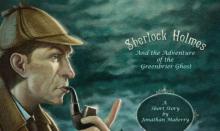 The Adventure of the Greenbriar Ghost
The Adventure of the Greenbriar Ghost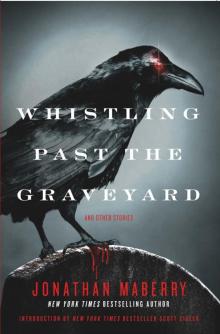 Whistling Past the Graveyard
Whistling Past the Graveyard Scary Out There
Scary Out There The Wolfman
The Wolfman The King of Plagues
The King of Plagues Doctor Nine
Doctor Nine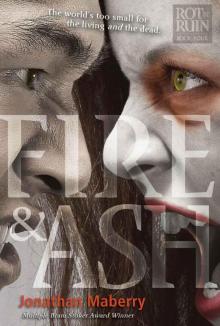 Fire & Ash
Fire & Ash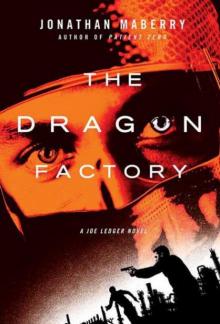 The Dragon Factory
The Dragon Factory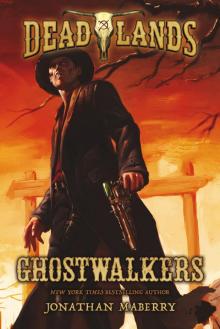 Deadlands: Ghostwalkers
Deadlands: Ghostwalkers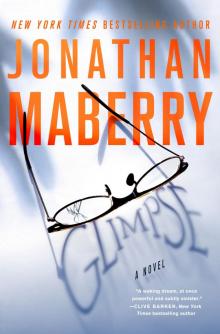 Glimpse
Glimpse Mars One
Mars One Benny Imura 03.5: Tooth & Nail
Benny Imura 03.5: Tooth & Nail Bits & Pieces
Bits & Pieces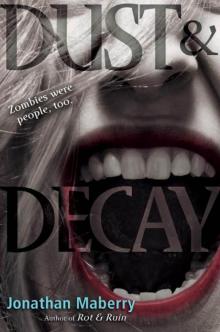 Dust & Decay
Dust & Decay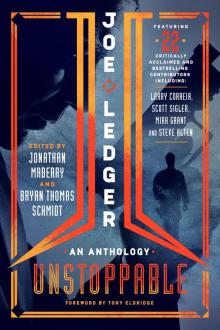 Patient Zero
Patient Zero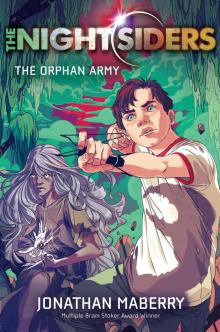 The Orphan Army
The Orphan Army Ghost Road Blues
Ghost Road Blues Vault of Shadows
Vault of Shadows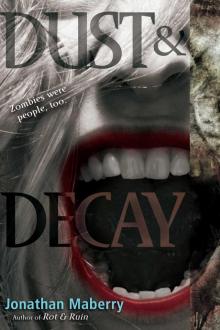 Dust and Decay
Dust and Decay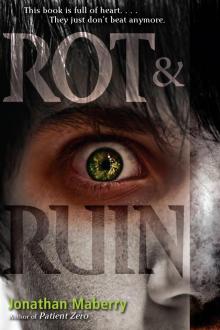 Rot and Ruin
Rot and Ruin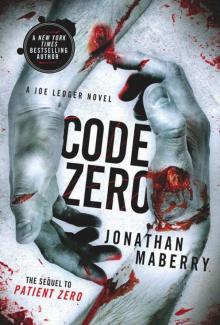 Code Zero
Code Zero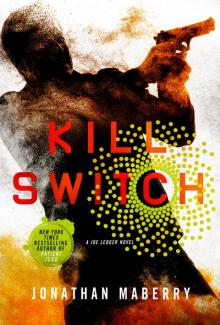 Kill Switch
Kill Switch Like Part of the Family
Like Part of the Family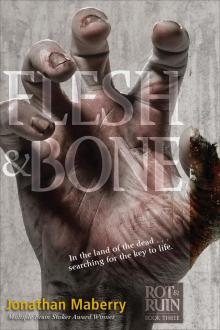 Flesh and Bone
Flesh and Bone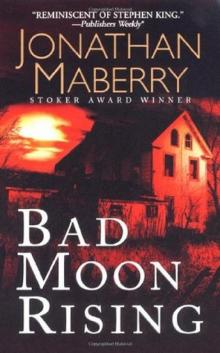 Bad Moon Rising
Bad Moon Rising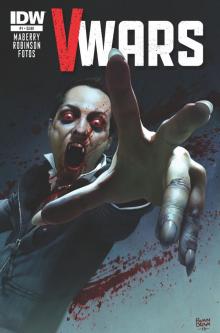 V-Wars
V-Wars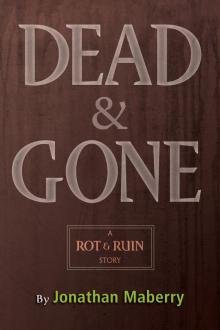 Dead & Gone
Dead & Gone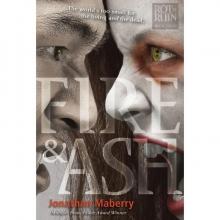 Fire and Ash
Fire and Ash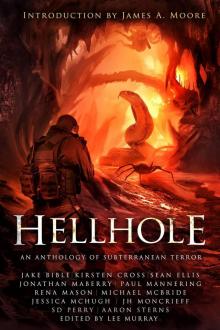 Hellhole
Hellhole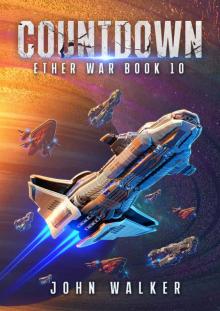 Countdown
Countdown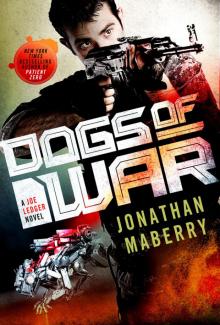 Dogs of War
Dogs of War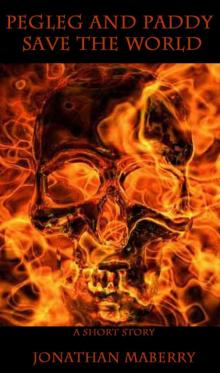 Pegleg and Paddy Save the World
Pegleg and Paddy Save the World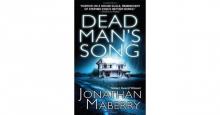 Dead Mans Song
Dead Mans Song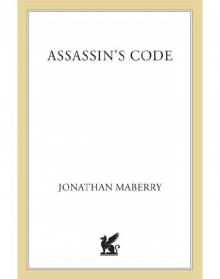 Assassin's Code
Assassin's Code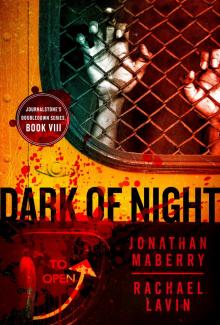 Dead of Night
Dead of Night Zombie CSU
Zombie CSU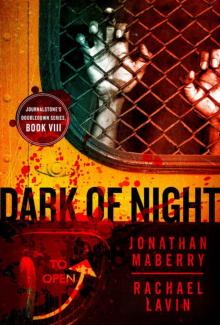 Dark of Night - Flesh and Fire
Dark of Night - Flesh and Fire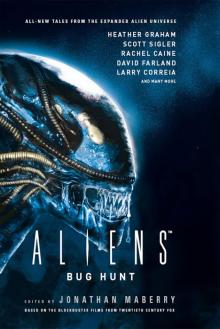 Aliens: Bug Hunt
Aliens: Bug Hunt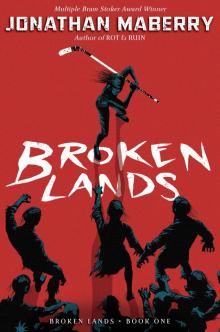 Broken Lands
Broken Lands Fall of Night
Fall of Night Ink
Ink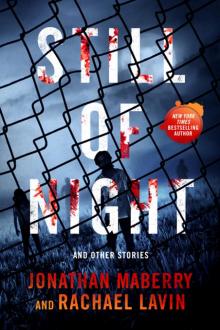 Still of Night
Still of Night Relentless
Relentless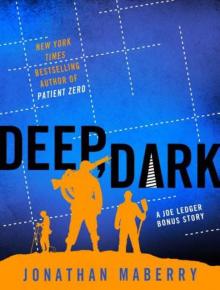 Joe Ledger 1.20 - Story to the Dragon Factory - Deep, Dark (a joe ledger novel)
Joe Ledger 1.20 - Story to the Dragon Factory - Deep, Dark (a joe ledger novel)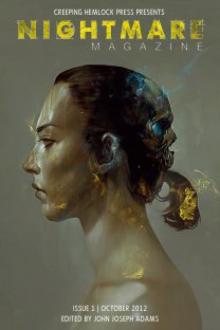 Property Condemned (pine deep)
Property Condemned (pine deep)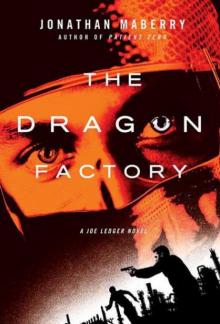 The Dragon Factory jl-2
The Dragon Factory jl-2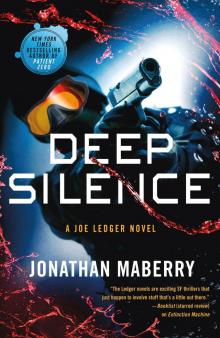 Deep Silence
Deep Silence Joe Ledger
Joe Ledger SNAFU: An Anthology of Military Horror
SNAFU: An Anthology of Military Horror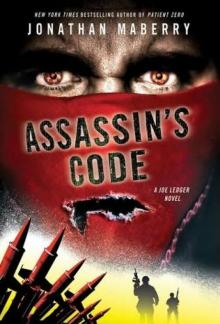 Assassin's code jl-4
Assassin's code jl-4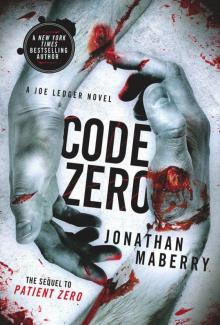 Code Zero: A Joe Ledger Novel
Code Zero: A Joe Ledger Novel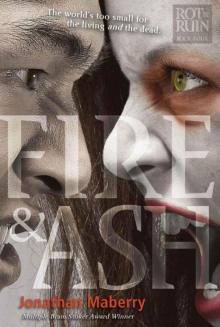 Fire & Ash bi-4
Fire & Ash bi-4 Tooth & Nail (benny imura)
Tooth & Nail (benny imura)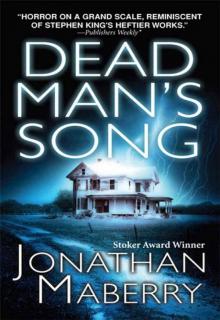 Dead Man's Song pd-2
Dead Man's Song pd-2 Joe Ledger: Unstoppable
Joe Ledger: Unstoppable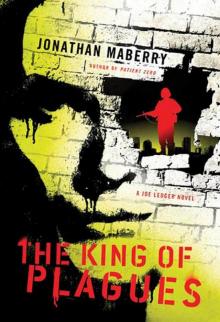 The King of Plagues jl-3
The King of Plagues jl-3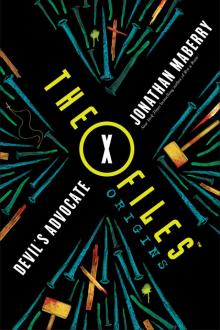 The X-Files Origins--Devil's Advocate
The X-Files Origins--Devil's Advocate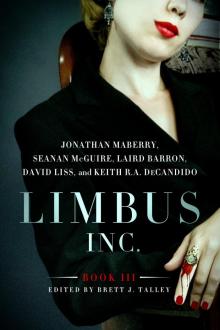 Limbus, Inc., Book III
Limbus, Inc., Book III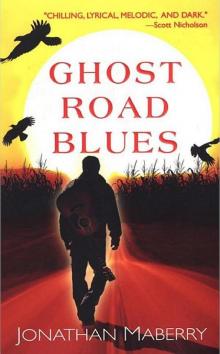 Ghost Road Blues pd-1
Ghost Road Blues pd-1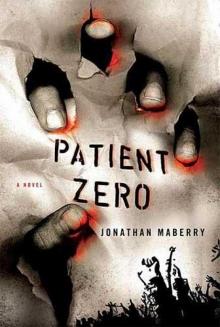 Patient Zero jl-1
Patient Zero jl-1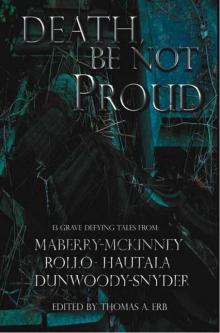 Death, Be Not Proud
Death, Be Not Proud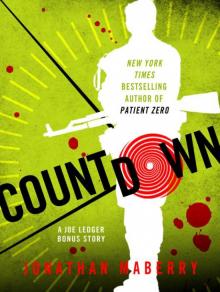 Countdown: A Joe Ledger Prequel Short Story to Patient Zero (joe ledger)
Countdown: A Joe Ledger Prequel Short Story to Patient Zero (joe ledger)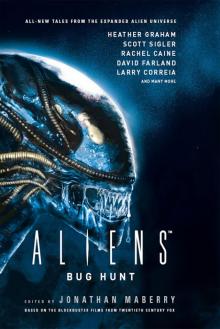 Aliens
Aliens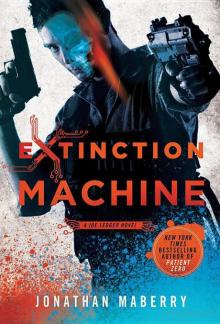 Extinction Machine jl-5
Extinction Machine jl-5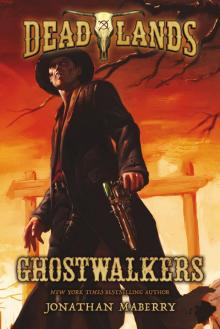 Ghostwalkers
Ghostwalkers Flesh & Bone bi-3
Flesh & Bone bi-3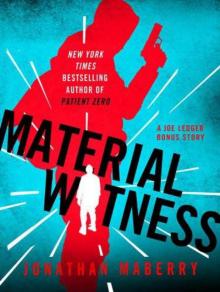 Joe Ledger 2.10 - Material Witness (a joe ledger novel)
Joe Ledger 2.10 - Material Witness (a joe ledger novel) Nights of the Living Dead
Nights of the Living Dead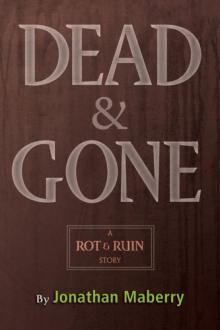 Dead & Gone (benny imura)
Dead & Gone (benny imura)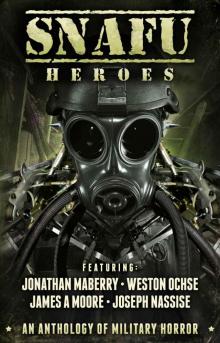 SNAFU: Heroes: An Anthology of Military Horror
SNAFU: Heroes: An Anthology of Military Horror Tooth & Nail: A Rot & Ruin Story
Tooth & Nail: A Rot & Ruin Story